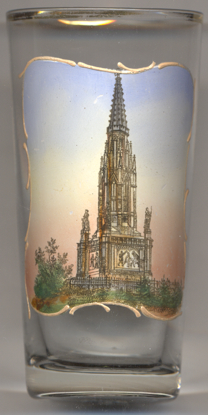

|
| DANMARK | DENMARK |
| Region Syddanmark | Region South Denmark |
Dybbøl (German: Düppel) is situated in South Jutland at the Bay of Flensburg just west of the narrow Als Sund, which separates the mainland from the Als island with Sønderborg. Dybbøl is part of the municipality of Sønderborg.
 Dybbøl had already been a battlefield during the First War of Schleswig (1848–1851), but became famous as the
site of the decisive Battle of Dybbøl (Danish: Slaget ved Dybbøl; German: Schlacht bei den
Düppeler Schanzen) during the Second War of Schleswig (1864) between Prussia and Denmark. After the Danish king
Christian IX (who was also the Duke of Schleswig) formally annexed the Duchy of Schleswig
in November of 1863, Prussian and Austrian troops invaded Jutland in January of 1864. The Dybbøl position was
ill-prepared due to too much effort having been used on fortifying the Dannevirke. Dybbøl particularly lacked safe
shelters in the forward line, but worse, the technological developments in artillery (particularly long-range rifled guns)
had made the geography of the position unsuited for a lengthy defense. During the battle around 3,600 Danes and 1,200
Prussians were either killed, wounded or disappeared. The war ended with the Treaty of Vienna
(1864) stipulating that Denmark had to cede the duchies of Schleswig, Holstein and Lauenburg
to Prussian and Austrian administration. One year later the Gastein Convention (signed in
Munich, 1865) awarded Schleswig and Lauenburg to Prussia, and Holstein to Austria. However,
Austria's decision to bring the question of Schleswig-Holstein to the Bundesversammlung, the parliament of the German
Dybbøl had already been a battlefield during the First War of Schleswig (1848–1851), but became famous as the
site of the decisive Battle of Dybbøl (Danish: Slaget ved Dybbøl; German: Schlacht bei den
Düppeler Schanzen) during the Second War of Schleswig (1864) between Prussia and Denmark. After the Danish king
Christian IX (who was also the Duke of Schleswig) formally annexed the Duchy of Schleswig
in November of 1863, Prussian and Austrian troops invaded Jutland in January of 1864. The Dybbøl position was
ill-prepared due to too much effort having been used on fortifying the Dannevirke. Dybbøl particularly lacked safe
shelters in the forward line, but worse, the technological developments in artillery (particularly long-range rifled guns)
had made the geography of the position unsuited for a lengthy defense. During the battle around 3,600 Danes and 1,200
Prussians were either killed, wounded or disappeared. The war ended with the Treaty of Vienna
(1864) stipulating that Denmark had to cede the duchies of Schleswig, Holstein and Lauenburg
to Prussian and Austrian administration. One year later the Gastein Convention (signed in
Munich, 1865) awarded Schleswig and Lauenburg to Prussia, and Holstein to Austria. However,
Austria's decision to bring the question of Schleswig-Holstein to the Bundesversammlung, the parliament of the German
 Confederation in Frankfurt, prompted Prussia to move their troops from Schleswig into Holstein,
which started the Austro-Prussian War (German War) of 1866, which after the Peace of Prague
resulted in Austria losing Holstein to Prussia and Venetia to Italy. Prussia also annexed a number of Austrian's allies
such as Hannover, Hesse-Kassel, Nassau, Frankfurt,
and parts of Hesse-Darmstadt. The Austrian Empire was transformed into the dual monarchy of
Austria-Hungary and the German Confederation was dissolved. Saxony, Saxe-Meiningen, Reuß-Greiz
(Reuss Elder Line) and Schaumburg-Lippe were spared annexation but were forced to join the North German Confederation led
by Prussia.
Confederation in Frankfurt, prompted Prussia to move their troops from Schleswig into Holstein,
which started the Austro-Prussian War (German War) of 1866, which after the Peace of Prague
resulted in Austria losing Holstein to Prussia and Venetia to Italy. Prussia also annexed a number of Austrian's allies
such as Hannover, Hesse-Kassel, Nassau, Frankfurt,
and parts of Hesse-Darmstadt. The Austrian Empire was transformed into the dual monarchy of
Austria-Hungary and the German Confederation was dissolved. Saxony, Saxe-Meiningen, Reuß-Greiz
(Reuss Elder Line) and Schaumburg-Lippe were spared annexation but were forced to join the North German Confederation led
by Prussia.
The  Düppel monument [left, no. 3819, and right, no. 2394]
was built by Prussia in 1872 on the Dybbøl hill, on the foundations of the Danish redoubt no. 4. The neo-Gothic
monument had a height of 22 m. After World War I, a referendum in 1919/1920 decided that northern Schleswig (now
Sønderjylland, southern Jutland) became part of Denmark. Plans to return the monument to Germany, however, were
dismissed by the German side. The monument was finally blown up by unknown persons in 1945.
Düppel monument [left, no. 3819, and right, no. 2394]
was built by Prussia in 1872 on the Dybbøl hill, on the foundations of the Danish redoubt no. 4. The neo-Gothic
monument had a height of 22 m. After World War I, a referendum in 1919/1920 decided that northern Schleswig (now
Sønderjylland, southern Jutland) became part of Denmark. Plans to return the monument to Germany, however, were
dismissed by the German side. The monument was finally blown up by unknown persons in 1945.
![[scale]](lineal.jpg)